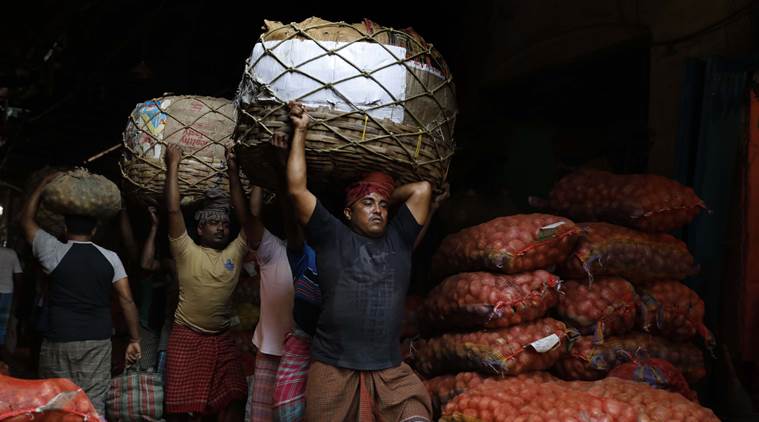
India’s GDP growth slips to 4.5%, slowest in more than six years
The GDP growth rate has now slowed for the sixth consecutive quarter with the previous low recorded at 4.3 per cent in March 2013.
by Express Web DeskOwing to a deceleration in manufacturing output and subdued farm sector activity, India’s GDP growth slipped to a 26-quarter low of 4.5 per cent in the second quarter (July-September) of the current fiscal, data released by National Statistical Office (NSO) Friday showed. The GDP growth rate has now slowed for the sixth consecutive quarter with the previous low recorded at 4.3 per cent in March 2013.
The July-September growth rate of gross value added (GVA), which is GDP minus net product taxes, has slowed to 4.3 per cent as against 6.9 per cent a year ago. With this, the GDP growth rate for April-September, the first half of this fiscal, stands at 4.8 per cent as against 7.5 per cent a year ago.
Watch | India’s GDP numbers of second quarter released, here’s how to read them
The economic growth has been sliding sharply in recent quarters, prompting the government to announce a series of measures including a mega corporate tax reduction to boost economic expansion.
As per the NSO data, the GVA growth in the manufacturing sector contracted by 1 per cent in the second quarter of this fiscal from 6.9 per cent expansion a year ago. Whereas, the farm sector GVA growth remained subdued at 2.1 per cent, down from 4.9 per cent in the corresponding period of the previous fiscal.
While construction sector GVA growth slowed to 3.3 per cent from 8.5 per cent earlier, the mining sector growth was recorded at 0.1 per cent as against 2.2 per cent contraction a year ago.
Electricity, gas, water supply and other utility services growth also slowed to 3.6 per cent from 8.7 per cent a year ago. Similarly, trade, hotel, transport, communication and services related to broadcasting growth was also down to 4.8 per cent in the second quarter from 6.9 per cent a year ago.
Financial, real estate and professional services growth slowed to 5.8 per cent in the Q2 FY2019-20 from 7 per cent a year ago. On the other hand, public administration, defence and other services reported improvement with an 11.6 per cent rise during the quarter under review from 8.6 per cent a year earlier.
Taking a swipe at the BJP government, the Congress said the declining numbers are a reflection of a failed ‘Modinomics’ and a ‘PakodaEconomic Vision’. Congress’ chief spokesperson Randeep Surjewala also alleged that for the BJP, the GDP was “Godse Divisive Politics” as he sought to bolster his attack by using the ongoing row over BJP MP Pragya Thakur’s remarks praising Mahatma Gandhi’s assassin Nathuram Godse.
“India’s GDP has collapsed to an abysmal 4.5%. We are in a virtual free-fall. This is the lowest GDP quarter in 6 years. But why is the BJP celebrating? Because their understanding of GDP (Godse Divisive Politics) suggests double digit growth levels. All in the perspective,” he said on Twitter.
In the first quarter (April-June) of the current fiscal, the country’s GDP growth had slipped to a 25-quarter low of 5 per cent.
On Wednesday, Finance Minister Nirmala Sitharaman had countered the opposition’s remarks on a “deepening economic crisis in the country” in the Rajya Sabha, stating that growth may have slowed down but the economy will never experience a “recession”.
Comparing macroeconomic data—GDP growth, inflation rate, FDI inflows, foreign reserves and demand side indicators—under the UPA-II (2009-14) and the previous NDA (2014-19) governments, she had said growth was higher during the Narendra Modi government’s first term while inflation was far lower.
A recession typically refers to two consecutive quarters of contraction in GDP, while a slowdown is a moderation in the growth rate of economic activity.
One of the reasons behind the lower inflation during the previous NDA government was a sharp fall in crude oil prices. During UPA-II, the Brent crude prices started rising from around $50 per barrel in April 2009 to a high of around $128 per barrel in March 2012, before settling at around $105 per barrel in March 2014.